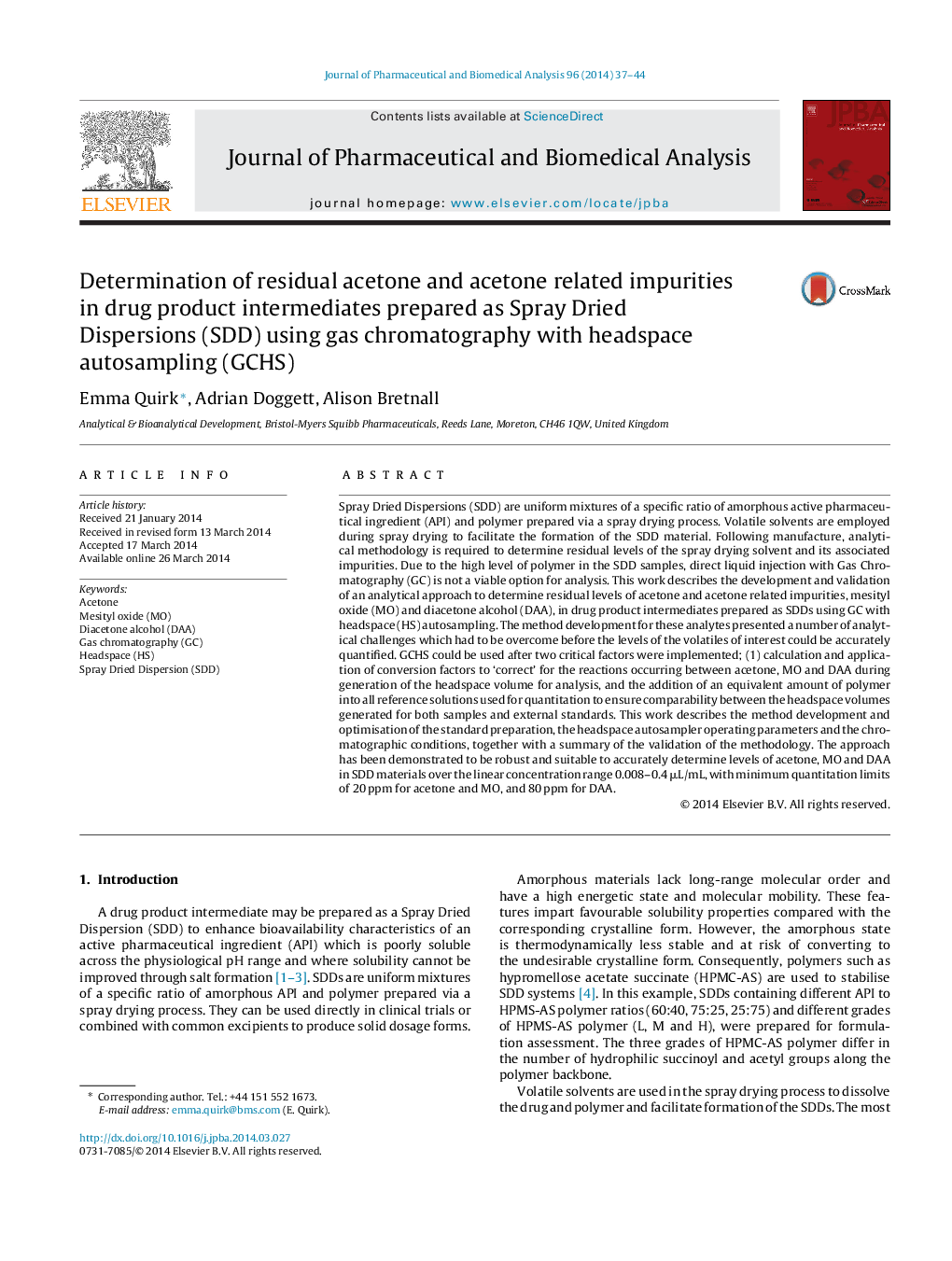| Article ID | Journal | Published Year | Pages | File Type |
|---|---|---|---|---|
| 1221652 | Journal of Pharmaceutical and Biomedical Analysis | 2014 | 8 Pages |
•An analytical approach for determination of acetone related volatiles in SDDs.•Use of gas chromatography with headspace autosampling.•Quantitation achieved using conversion factors for headspace reactions.•Polymer added to solutions to ensure comparability between samples and standards.
Spray Dried Dispersions (SDD) are uniform mixtures of a specific ratio of amorphous active pharmaceutical ingredient (API) and polymer prepared via a spray drying process. Volatile solvents are employed during spray drying to facilitate the formation of the SDD material. Following manufacture, analytical methodology is required to determine residual levels of the spray drying solvent and its associated impurities. Due to the high level of polymer in the SDD samples, direct liquid injection with Gas Chromatography (GC) is not a viable option for analysis. This work describes the development and validation of an analytical approach to determine residual levels of acetone and acetone related impurities, mesityl oxide (MO) and diacetone alcohol (DAA), in drug product intermediates prepared as SDDs using GC with headspace (HS) autosampling. The method development for these analytes presented a number of analytical challenges which had to be overcome before the levels of the volatiles of interest could be accurately quantified. GCHS could be used after two critical factors were implemented; (1) calculation and application of conversion factors to ‘correct’ for the reactions occurring between acetone, MO and DAA during generation of the headspace volume for analysis, and the addition of an equivalent amount of polymer into all reference solutions used for quantitation to ensure comparability between the headspace volumes generated for both samples and external standards. This work describes the method development and optimisation of the standard preparation, the headspace autosampler operating parameters and the chromatographic conditions, together with a summary of the validation of the methodology. The approach has been demonstrated to be robust and suitable to accurately determine levels of acetone, MO and DAA in SDD materials over the linear concentration range 0.008–0.4 μL/mL, with minimum quantitation limits of 20 ppm for acetone and MO, and 80 ppm for DAA.
Graphical abstractFigure optionsDownload full-size imageDownload as PowerPoint slide
